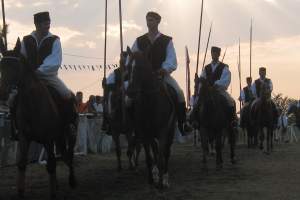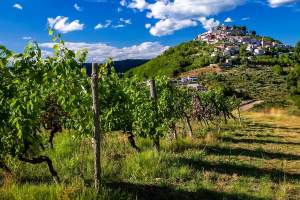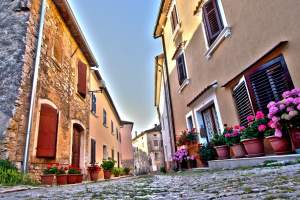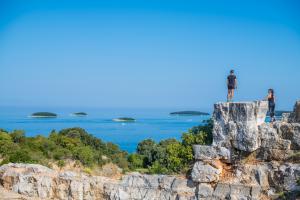Buje-Buie
Situated on top of a hill at 222 m above sea level, the small town of Buje-Buie dominates the surrounding green terrace-like fields. Due to its strategic location it is called The Watchman of Istria.
Situated on top of a hill at 222 m above sea level, the small town of Buje-Buie dominates the surrounding green terrace-like fields. Due to its strategic location it is called The Watchman of Istria.
Buje-Buie is surrounded by numerous hills which were settled already during the Bronze Age by various tribes and during the Iron Age the Histrians came to their prehistoric settlements. With the foundation of Roman Reign the region becomes Agro della Cononia di Trieste which was annexed to the region Venetia et Histria. During the turbulent time of Barbarian invasions the population found refugee in fortresses built on flat hill tops. The fortified castle of Buje-Buie dates from this period, too.
In the year 981 the castle of Buje-Buie was subdued to the Patriarchate of Aquilea and in 1102 it fell definitely under its reign. In the 13th century Buje-Buie was proclaimed a free commune. In 1412 the commune of Buje-Buie signs the act of surrender to Venice. Four centuries of Venetian reign set its stamp on the historical centre of Buje-Buie starting from the Spiazzo alle Porte, today’s Liberty Square, which was once the seat of the town loggia.
In the 15th century the church of Mother of God of Mercy was built while its tower was erected in the 17th century. Opposite to these buildings there is the Ethnographic museum standing above the underpass which used to be a back gate of the wall fence. The settlement was protected by a number of defence towers, two of which are still partially preserved – a square and a pentagonal tower used for protection of the West Gate.
In the Square of St. Servul, on top of the hill, stands a cathedral, renovated in the 18th century, which contains all elements of a former Romanic church built on foundations of the temple of Jupiter. A 50 m bell tower was built in the 15th century in the Aquilean style. In front of it there is a flagstaff from 1655. Next to the bell tower stands a noble palace in the Gothic-Venetian style, which was used as the seat of a court for a period of time. From this central square streets paved with stone lead in different directions building a street network of the historical town plan. Since the 18th century the settlement has spread outside the town walls. The new neighbourhoods have become important centres of culture, education, sport, economy and administration.

















